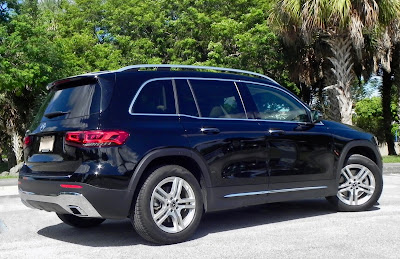REVIVED FIAT 124 SPIDER BOTH A SIBLING
AND A RIVAL TO MAZDA MX-5 MIATA
Since its inception just over three decades ago, the Mazda MX-5 Miata not only has been the go-to choice for car shoppers looking for an affordable, modern-day version of the classic 1950s-’60s British roadster, for a good part of that time it pretty much has been the only option.
But not so much any more.
Fiat broadened the field by bringing back its 124 Spider as a 2017 model, ending the Miata’s monopoly in the niche segment.
The 124 Spider shares many characteristics with the Miata, not surprising since the Japanese automaker builds both side-by-side in its plant in Hiroshima. They get different engines and transmissions, however, and Italian designers give the latest Spider styling cues based on the original Spiders that lived from the mid-1960s to the mid-1980s
Unfortunately, the new Spider also has the same fussy infotainment system that demand you pay attention to what screen mode you have selected on the center screen before you begin spinning the dial to make your selection.
Also, while the Mazda engine is naturally aspirated, the 124 Spider gets a turbocharged 1.4-liter, 4-cylinder engine that is tuned for 160 horsepower in Classico and Lusso trims and 164 in the top-of-the-line Abarth and a generous 184 pound-feet of torque in all three trims.
That power gets to the rear wheels via either a standard 6-speed manual transmission or an optional 6-speed automatic with paddle shifters for manual gear selection, to which we say, it’s a sports car. Go with the manual.
My test vehicle was the stick-shift Lusso trim that adds some extra features to the Classico’s standard equipment like heated leather seats and a 7-inch display screen for upgraded infotainment functions. My test car also had navigation that is included in an optional Navigation and Sound Group package that adds $1,200 to the starting MSRP of $28,145.
Other standard features in the Lusso trim include voice command capability, Bluetooth communications, leather-wrapped steering wheel with audio controls, automatic dual-zone climate control, manual adjustable seats (6-way driver, 4-way passenger), and a small rear console lockable storage compartment.
As with all trims, keyless entry and push-button start also are standard on the Lusso.
LED tail lamps are standard, but LED headlights are optional and available in a Visibility Group package that adds $995 to the bottom line. The Visibility package also includes LED daytime running lights.
Advanced safety features like blind-spot and cross-path detection, rear-parking assist, and automatic dimming for mirrors are available as options. Standard safety systems include the usual collection of airbags and seatbelts as well as a backup camera and electronic stability control.
The convertible top is manually operated, but that is part of its charm. It is secured with one latch at the top of the windshield frame, and you can open it by giving the latch a turn and flipping the soft top back over you head. The top clicks into place for a secure fastening and tugging another latch between the seats releases it for you to reverse the operation.
Pricing for the 124 Spider starts at $25,390 for the base Classico, and the Abarth starts at $29,390.
My test Lusso had a bottom line of $33,495 when the extras and the $1,495 destination and delivery charge were all added in, but here is something to consider.
If those numbers are just out of your price range, you might look for a 2019 model because Fiat says the only thing new for 2020 was a “Scorpion Sting” side-stripe and hood decal package available on Abarth models.
In fact, about the only change from the debut 2017 model is that a 7-inch display monitor and rearview camera were made standard for 2019.
What I liked about the 2020 Fiat 124 Spyder Lusso: I loved being able simply to unlatch the top and flip it back over my head in a kind of devil-may-care gesture. And you don’t have to get out of your seat to put it back in place either. It’s a fun car to drive with good road manners whether in town or on expressways. Fuel economy (26 miles-per-gallon city, 35 highway, 30 combined with the manual) is good as well.
What I didn’t like about the 2020 Fiat 124 Spyder Lusso: The trunk not only is small, which could be expected of its class, but it has an odd kind of shape as well with no flat floor to lay things on. Operation of infotainment functions requires some extra steps.
Would I buy the 2020 Fiat 124 Spyder Lusso? As a “second” family car, definitely yes. Or, if I were looking at a car that might appeal to a son or daughter, yes.




























